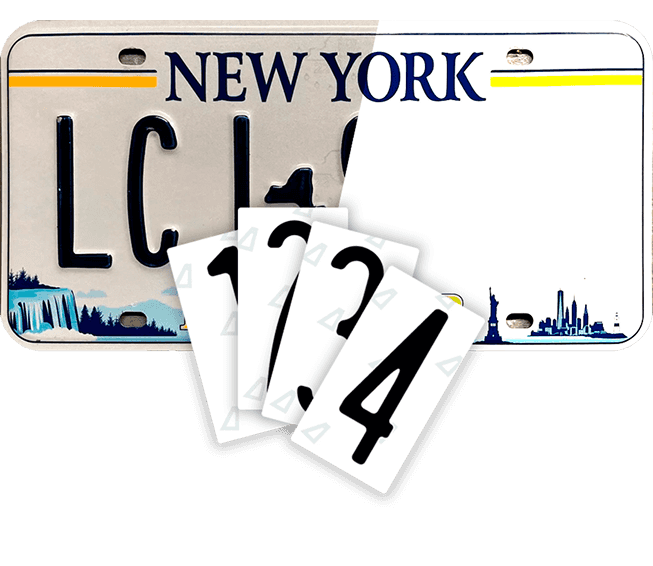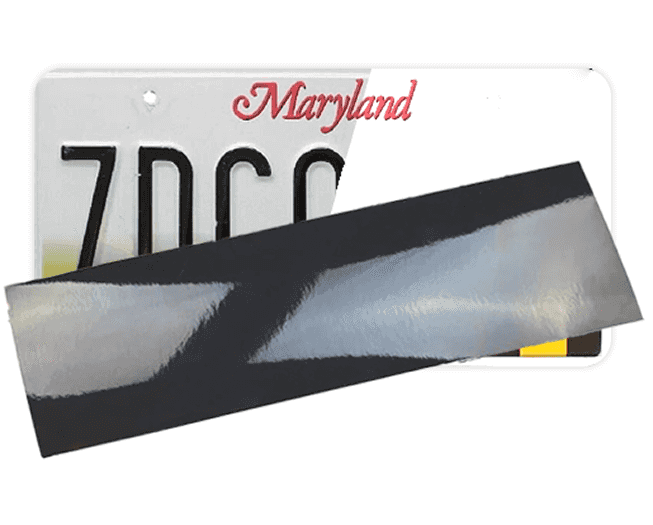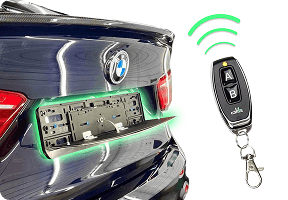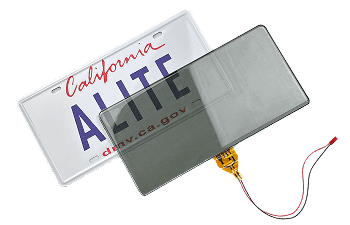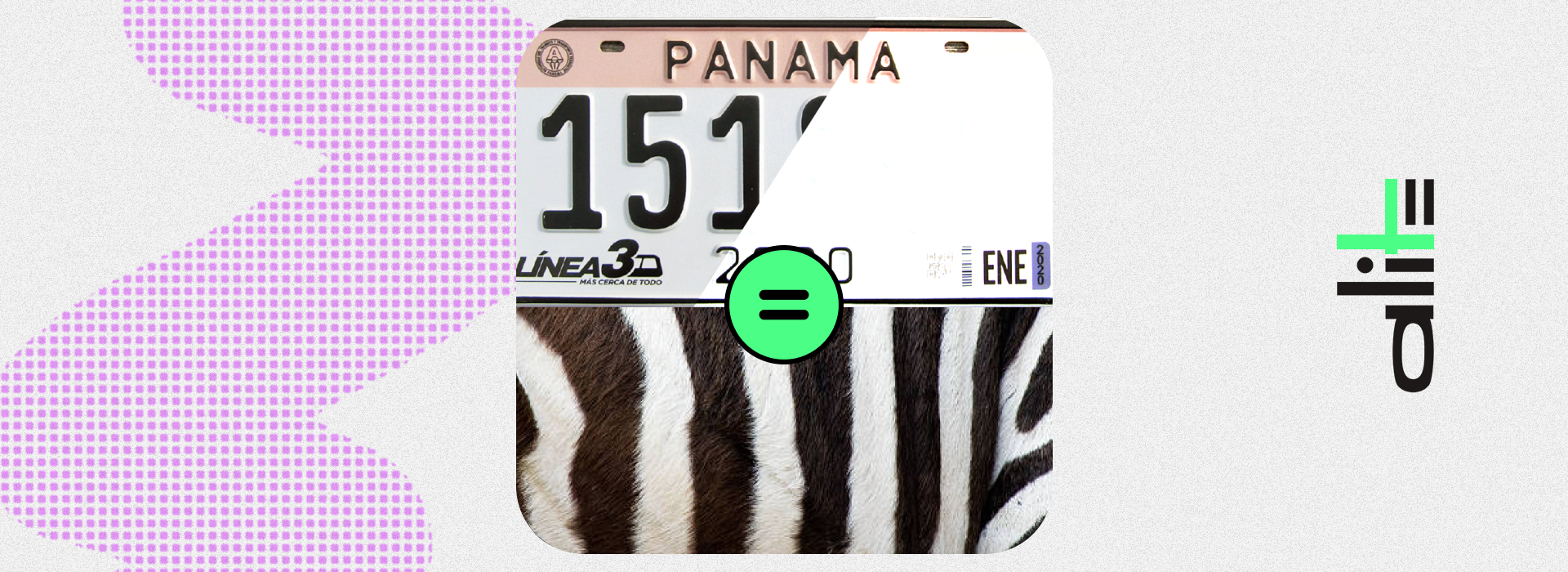Internet está lleno de mitos sobre las matrículas que prometen maneras fáciles de bloquear las cámaras. Desde aerosoles reflectantes hasta películas transparentes, muchos productos afirman hacer que las matrículas sean invisibles a la tecnología policial. Estas historias se propagan rápidamente porque combinan la curiosidad con el deseo de proteger la privacidad. Sin embargo, la mayoría carece de pruebas rigurosas y se basan en evidencia anecdótica.
En realidad, los sistemas de reconocimiento evolucionan más rápido que la mayoría de los trucos caseros. Lo que pudo haber engañado a una cámara antigua hace una década rara vez funciona en configuraciones modernas con iluminación infrarroja y corrección de imagen basada en IA. Comprender el origen de estos mitos es el primer paso para distinguir la realidad de la ficción.
Por ejemplo, un mito antiguo sugería que cubrir un plato con film transparente dispersaría la luz del flash lo suficiente como para ocultar los dígitos. Si bien esto podría haber generado una fotografía borrosa en la década de 1990, las cámaras de alta velocidad actuales capturan imágenes en múltiples fotogramas, lo que permite que los algoritmos filtren las distorsiones. Los mitos sobreviven porque son fáciles de imaginar, incluso si no se ajustan a la realidad tecnológica.

Apagón de Alite
Sigilo en un clic
prueba
Más informaciónLa verdad sobre el spray para platos: ¿realmente funciona?
Una de las afirmaciones más comunes es que los aerosoles pueden ocultar los números de las cámaras de tráfico. El marketing sugiere que los aerosoles reflectantes crean reflejos en las fotos con flash, impidiendo el reconocimiento óptico de caracteres. Pero la realidad es menos convincente. Las pruebas con cámaras de velocidad modernas muestran que los aerosoles pueden causar reflejos leves bajo ciertas condiciones de iluminación, pero rara vez lo suficiente como para bloquear las imágenes.
La razón es simple: muchas cámaras de control utilizan infrarrojos en lugar de flash visible. Los infrarrojos penetran fácilmente estos recubrimientos, dejando la placa claramente legible. Si bien los aerosoles pueden crear un brillo estético, no garantizan la invisibilidad. Esto los convierte en uno de los mitos más persistentes, pero menos efectivos, sobre el bloqueo de placas.
Puntos clave sobre la verdad del spray de placa:
- Funciona de manera inconsistente, principalmente en cámaras obsoletas
- Tiene poco efecto en los sistemas de reconocimiento basados en infrarrojos.
- A menudo se comercializan con promesas exageradas.
Revistas automotrices independientes han probado estos aerosoles en diferentes condiciones: luz diurna, destellos nocturnos, lluvia y niebla. En casi todos los casos, la placa permaneció legible. Esto refuerza la conclusión de que los aerosoles son más un mito que una realidad.

Nanocintas Alite
Haz clic y pega
prueba
Más informaciónMito contra las cámaras: ¿Las pegatinas realmente pueden bloquear la detección?
El mito anticámara sugiere que las pequeñas pegatinas o parches reflectantes pueden impedir que los sistemas de reconocimiento lean una matrícula. A diferencia de muchas afirmaciones exageradas, este método muestra resultados medibles en ciertas condiciones. Al redirigir el flash o la luz infrarroja, las pegatinas pueden crear un resplandor localizado que dificulta la captura de dígitos individuales.
Los parches reflectantes básicos suelen funcionar de forma inconsistente, pero los diseños avanzados, como las pegatinas de nanopelícula Alite , están diseñados con patrones ópticos que interrumpen tanto la luz visible como las imágenes infrarrojas. Aplicados con cuidado, funcionan como una forma específica de la pegatina de nanopelícula para matrícula , proporcionando una capa adicional de interferencia.
Las pruebas de campo demuestran que, si bien ninguna pegatina garantiza la invisibilidad en todos los sistemas, las opciones de alta calidad pueden reducir las tasas de captura, especialmente con cámaras antiguas o de gama media. Esto convierte el enfoque anti-cámara en algo más que un mito: con los materiales adecuados y una colocación precisa, puede ser práctico en configuraciones caseras para ocultar la placa.

Nanofilm Ecoslick
Pegatinas antirradar
prueba
Más información¿Por qué persisten los mitos sobre las matrículas?
Aunque muchos mitos sobre las matrículas se han desmentido repetidamente, siguen resurgiendo. Una de las principales razones es que las antiguas tecnologías de control de tráfico eran más fáciles de engañar. Las primeras cámaras de velocidad, con baja resolución, podían verse afectadas por el deslumbramiento, la suciedad o las matrículas inclinadas. Historias de aquella época aún circulan hoy en día, lo que refuerza la creencia de que los trucos sencillos siguen siendo eficaces.
Estos mitos también se propagan porque despiertan la curiosidad. La idea de burlar la vigilancia resulta atractiva, incluso cuando la evidencia es débil. Los foros en línea, los vídeos y el boca a boca amplifican estas afirmaciones, a menudo dándoles más credibilidad de la que merecen. Distinguir las anécdotas obsoletas de la realidad actual es fundamental al evaluar cualquier producto o método.
Por ejemplo, las demostraciones virales a veces muestran una placa que parece desaparecer bajo el flash de una fotografía. Lo que a menudo se omite es que estas pruebas utilizan cámaras de consumo, no sistemas ALPR de uso policial. Una vez probadas con tecnología real, los resultados casi siempre son decepcionantes.

Material de nanopelícula Ecoslick
Material antirradar
prueba
Más informaciónLa realidad detrás de las afirmaciones sobre el bloqueo de placas
Al considerar todos los factores, productos como aerosoles, pegatinas o superposiciones ofrecen una eficacia limitada. La realidad es que los aerosoles pueden cambiar el aspecto de una placa en fotos informales, pero su efecto es limitado contra los sistemas de reconocimiento modernos. De igual manera, el mito anticámara exagera la eficacia de pequeños parches o pegatinas para bloquear de forma fiable los dígitos de la placa. En general, Los mitos sobre las matrículas continúan, principalmente, porque son fáciles de creer, no porque funcionen consistentemente.
La tecnología actual de control policial es mucho más avanzada. Las imágenes multiángulo, la óptica de alta resolución y la iluminación infrarroja hacen que la mayoría de los trucos de baja tecnología queden obsoletos. Mientras continúa la experimentación en las comunidades de aficionados al bricolaje, los conductores deben ser escépticos ante productos simples que se comercializan con promesas audaces. Estos mitos pueden resultar entretenidos o intrigantes, pero en la práctica, los sistemas avanzados los han superado.
En conclusión, los mitos prosperan en el espacio entre los recuerdos obsoletos y las realidades actuales. Comprender los verdaderos límites de los aerosoles, las pegatinas antirradar y las soluciones rápidas ayuda a los conductores a tomar decisiones más informadas. La realidad es que el bloqueo de matrículas sigue siendo, en gran medida, un mito en el contexto de la vigilancia moderna. Para cualquier persona preocupada por la privacidad, centrarse en el conocimiento tecnológico y la evaluación crítica es mucho más útil que confiar en trucos. Reconocer la verdad sobre los aerosoles para matrículas , cuestionar todos los mitos anticámaras y desmentir los populares... Los mitos sobre las matrículas permiten a los conductores separar las especulaciones de los hechos y evitar gastar dinero en soluciones ineficaces.

Marco plegable Alite Flipper
Sigilo en un clic
prueba
Más informaciónDescubra: La verdad sobre los "platos fantasma": ¿realmente existen?


